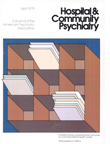Utilization Review and Resident Education
Abstract
The reasons for psychiatric hospitalization are not always taught clearly and formally to psychiatric residents; screening criteria employed in utilization review can be a tool for helping residents gather data and make decisions about the admission or continued stay of patients. On the admitting and inpatient units of the Payne Whitney Psychiatric Clinic, residents use sets of criteria for admission and for continued stay, with accompanying guidelines and clinical examples, as part of their training. The authors outline principles used in developing the criteria, including the belief that they should be applicable independent of diagnosis. They suggest that in a teaching hospital screening criteria should be taken as standards, and that they should be developed as part of the educational program and only then introduced into utilization review.
Access content
To read the fulltext, please use one of the options below to sign in or purchase access.- Personal login
- Institutional Login
- Sign in via OpenAthens
- Register for access
-
Please login/register if you wish to pair your device and check access availability.
Not a subscriber?
PsychiatryOnline subscription options offer access to the DSM-5 library, books, journals, CME, and patient resources. This all-in-one virtual library provides psychiatrists and mental health professionals with key resources for diagnosis, treatment, research, and professional development.
Need more help? PsychiatryOnline Customer Service may be reached by emailing [email protected] or by calling 800-368-5777 (in the U.S.) or 703-907-7322 (outside the U.S.).



